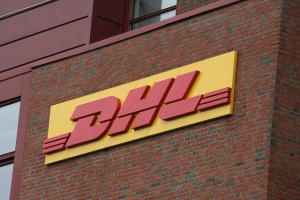The 2014 DHL Export Barometer has revealed that Australian exporters are gaining confidence while learning to manage a strong Australian dollar, international competition and rising raw material costs.

“The DHL Export Barometer has shown that exporter confidence has steadily increased since the lows of 2012. 61% of exporters surveyed expect orders to increase in the coming year, up on last year’s 58%. Exporters are also more confident about company profitability, with 50% expecting an increase in shipments,” said Gary Edstein, Senior Vice President at DHL Express Oceania.
“However, only 37% of exporters intend to increase staff numbers in the coming 12 months and only 48% of exporters achieved an increase in orders over the past 12 months, which is slightly down on last year (51%). These results are representative of the cautious market that we have witnessed over the past twelve months. However, all indicators point to overall strength of the Australian economy and the contribution that the exporter community makes to Australia’s prosperity.”
The Barometer has showed that Australian exporters are diversifying their export markets beyond China into the rest of Asia and the Middle East.
“Whilst media reports imply we are putting all the export eggs in the China basket, the Barometer clearly shows an overall diversity in our export. In 2014, the Middle East (54%) is considered the most promising market, ahead of North America and China (51%). Indeed, many Australian companies use Dubai increasingly as a hub for their Middle East operations and with all this commercial interest, there is naturally a large number of Australian expatriates living in the region,” said Tim Harcourt, JW Nevile Fellow in Economics at UNSW.
The barometer has also shown that the country’s efforts to shift away from over-dependence on the mining sector have yielded stronger results from the services and agriculture industries over the last twelve months.
“There are now clear signs the exporter community represents a more diverse group of industry sectors. Some might say we’ve gone from the mining boom to the dining boom with the services exporters most confident they will increase their export orders in the next 12 months,” Mr Harcourt said.
The barometer found that the strong dollar is still considered to have had the greatest negative impact on sales but that has reduced 7% since 2013 (53%), as has the impact of international competition. The number of exporters challenged by international competition (34%, down 5%) and domestic economic conditions (20%, down 8%) has declined, while the cost of raw materials (29%, up 3%) and regulatory constraints (18%, up 6%) have both become more prevalent.
On potential Free Trade Agreements (FTA), 35% of exporters said a FTA with Japan would have a positive impact, while 61% of exporters thought a China–Australia FTA would benefit their business.
For the first time, the Barometer asked how exporters used social media to generate export orders or enquiries. Overall, 37% of exporters used social media, with 24% using Facebook, 14% LinkedIn, 11% Google+ and 9% on Twitter.
The DHL Export Barometer is an initiative aimed at analysing export confidence in Australia and identifying export trends, and was first launched in November 2003. Conducted by ACA Research, 504 Australian exporters were surveyed for the 2014 DHL Export Barometer Between 29 April 2014 and 15 May 2014.



















